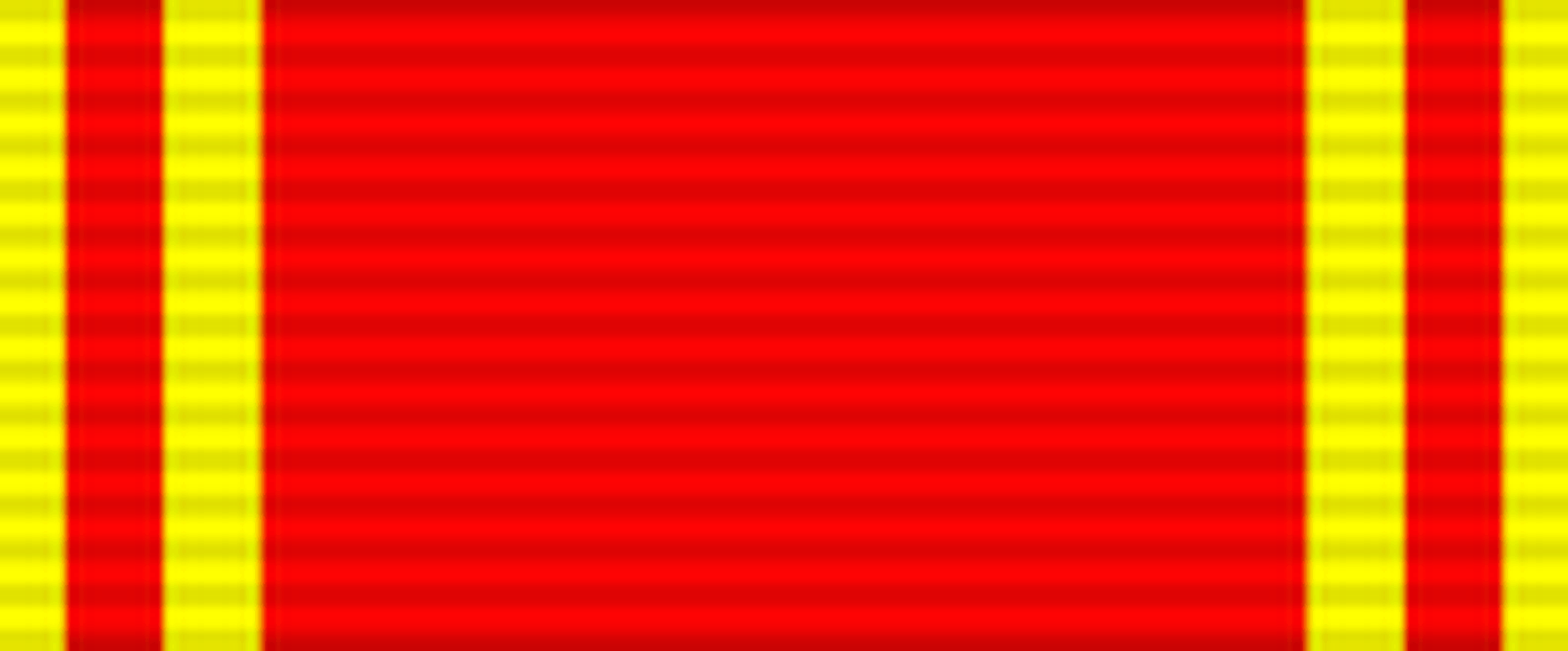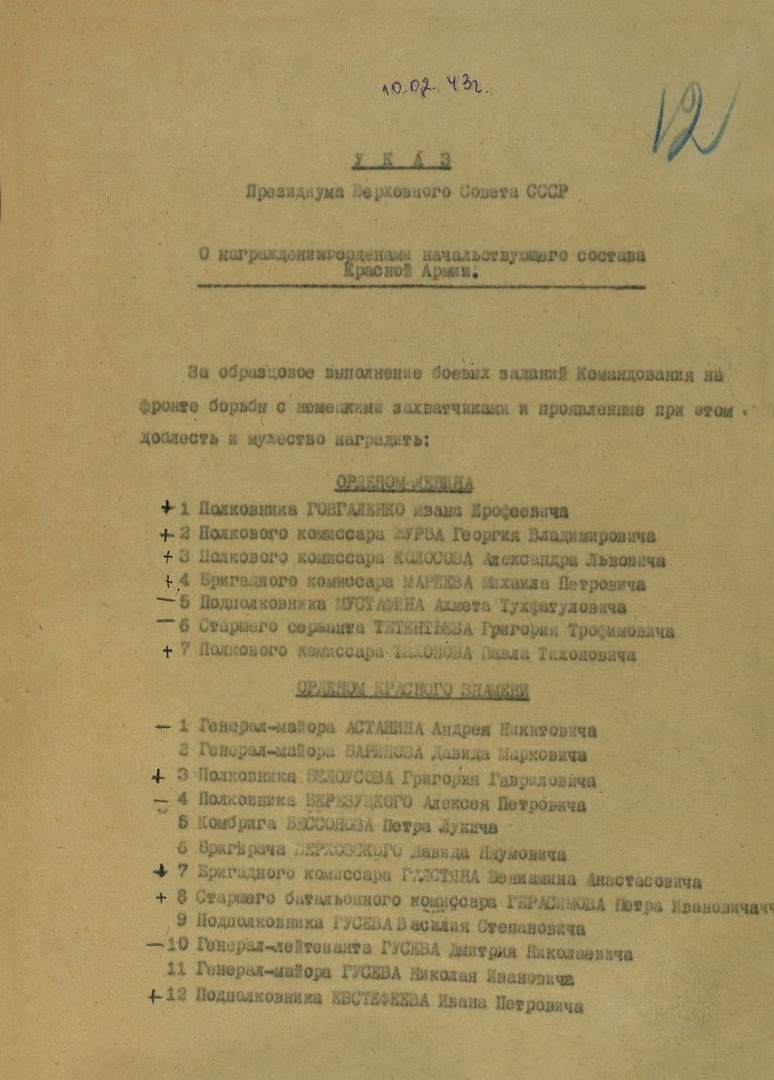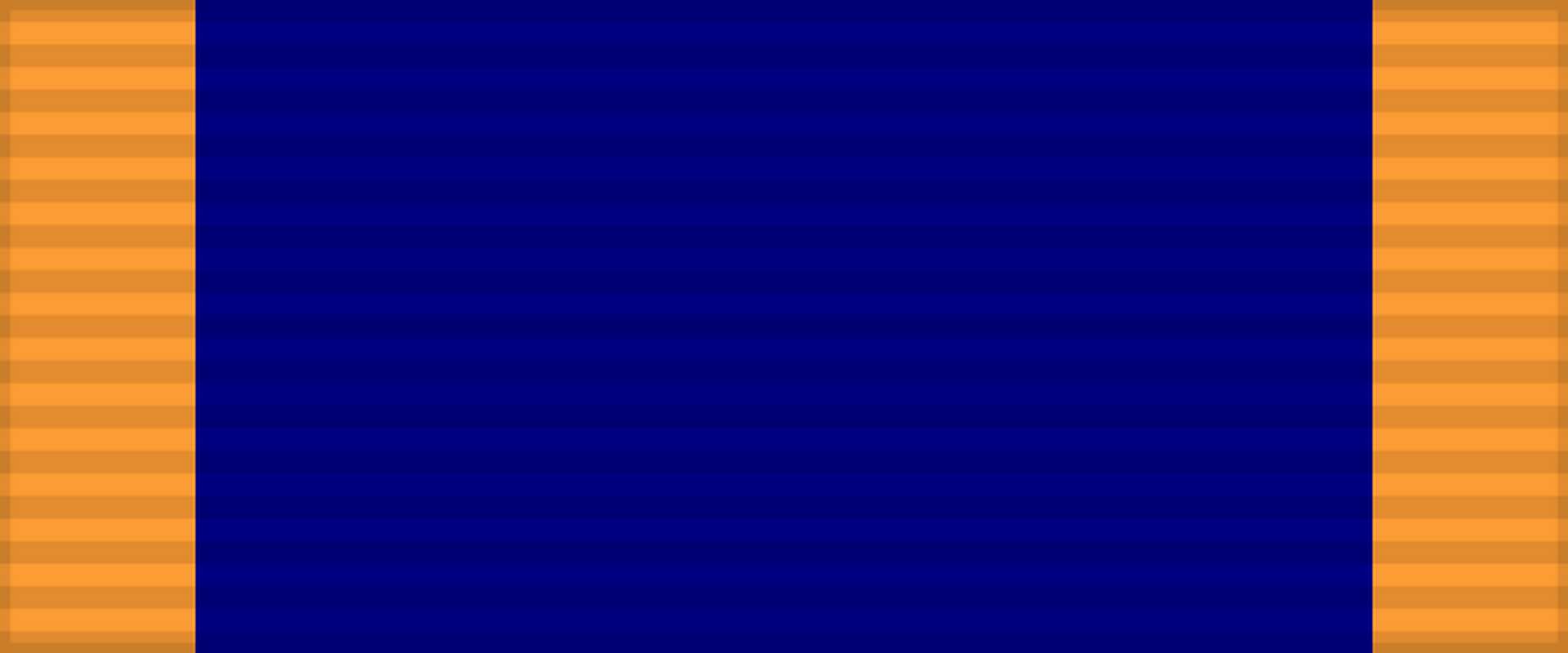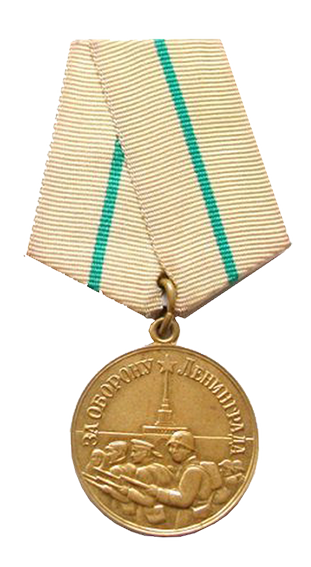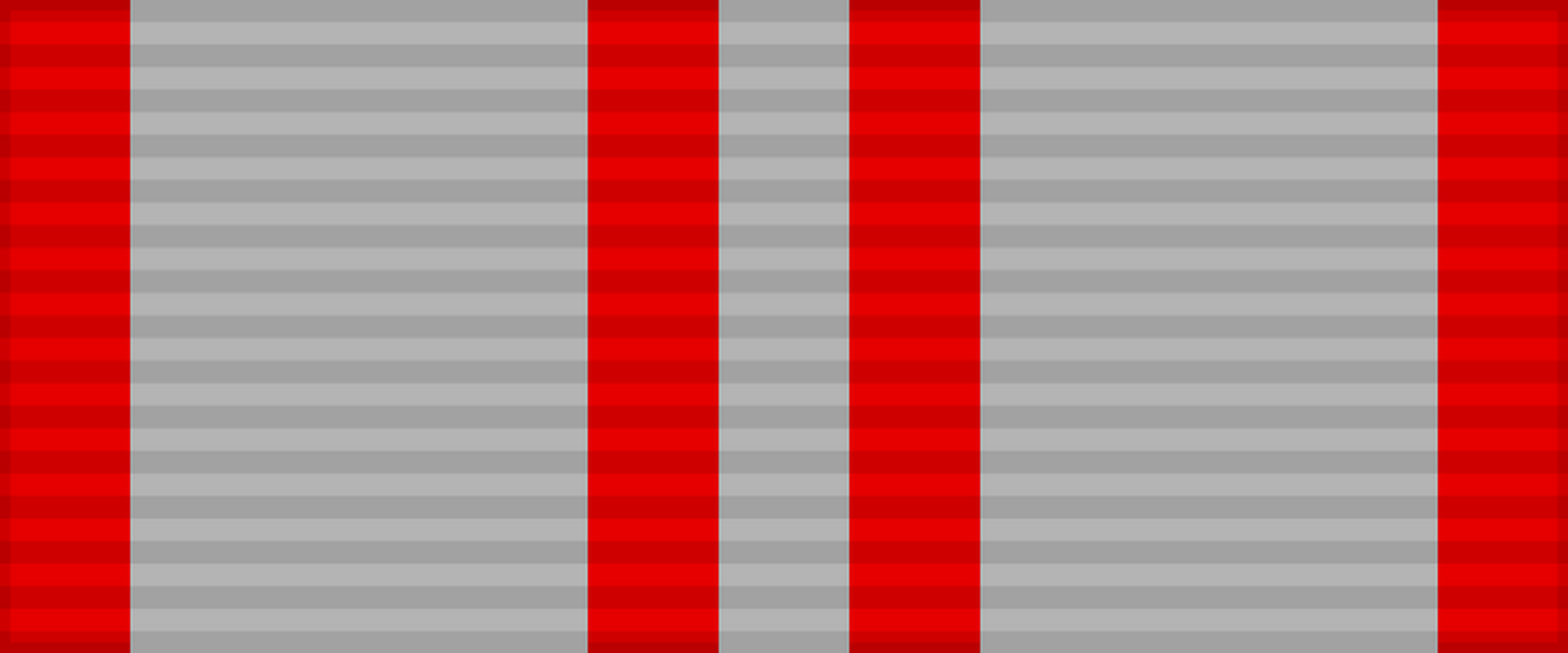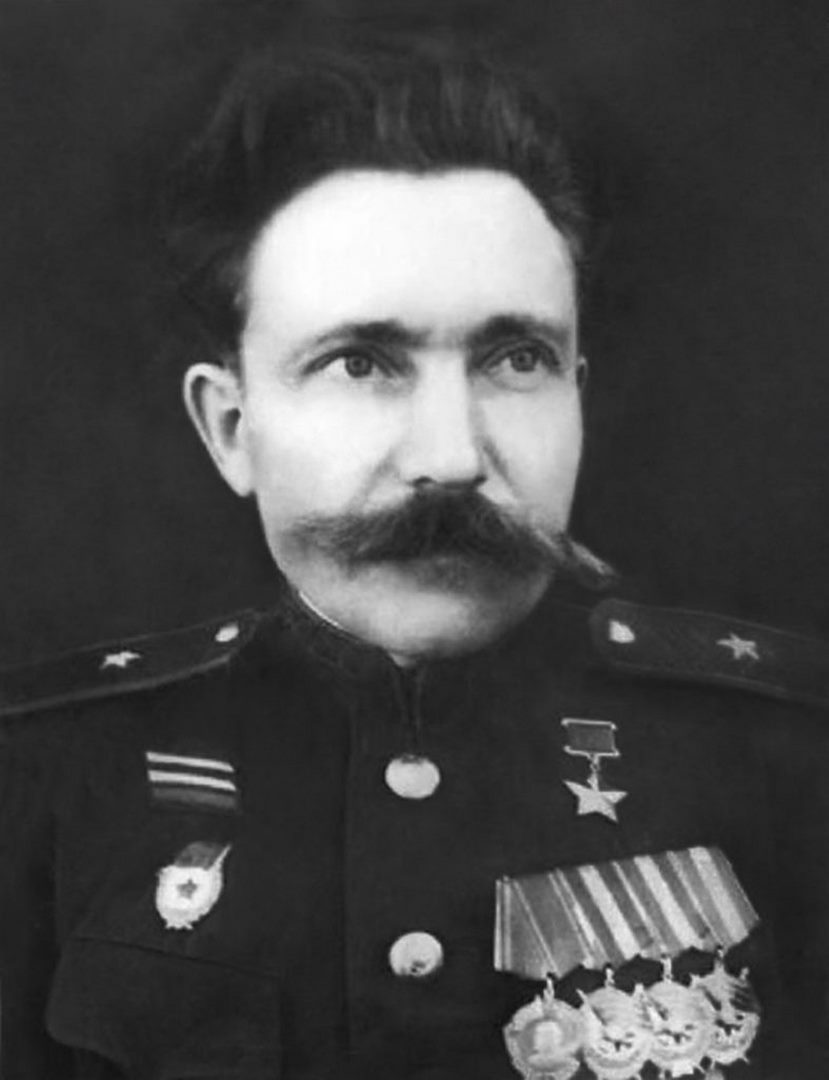
KRASNOV ANATOLY ANDREEVICH
Lieutenant, member of the Soviet-Finnish and world war II Hero of the Soviet Union(21.03.1940)
He was born on June 18, 1906 in Penza in the family of a railway worker. In 1918, he graduated from Penza primary school, in 1925 — Ruzaev agricultural school, and in 1928, Penza agricultural College, then working in the village of Zavivalovka Chembarsky district.
In September 1928, he was drafted by the Penza city military enlistment office into the red Army. He served in the 102nd rifle regiment of the 34th rifle division of the Volga military district, where he completed one-year command courses in the platoon commander program. In September 1929, he was dismissed to the reserve. From 1929 to 1936, he worked as an agronomist, then as a senior agronomist in the Buguruslansky district of the middle Volga region and the Orenburg region.
In March 1936, he was again called up to the red army by the Buguruslansky district military Commissariat of the Orenburg region. Sent for service in the 210th rifle regiment of the 70th rifle division of the Leningrad military district, where he served as a platoon commander, from may 1937 – chief of staff of the battalion, from August 1938-adjutant senior battalion. In 1939, he graduated in absentia From the higher rifle and tactical improvement courses of the infantry command staff “Shot”.
have minimal part in the battles of the Soviet-Finnish war. At the front, he served as a battalion commander in his regiment. In combat, he was distinguished by bravery, was shell-shocked in action on December 26, 1939 and wounded in action on March 6, 1940.
Battalion of the 68th infantry regiment (the 70th infantry division, 7th army, Northwest front) under the command of Lieutenant Krasnov 27 February 1940 under fire of the enemy overcame a mile on the ice of the Gulf of Finland and the icy shaft, then, with the help of artillery fire had cleared the enemy from the island Hannuksela-Saari and occupied the village of Hanukkah.
By a decree of the Presidium of the Supreme Soviet of the USSR dated March 21, 1940, Lieutenant Anatoly A. Krasnov was awarded the title Hero of the Soviet Union with the order of Lenin and the gold Star medal (No. 297) for exemplary performance of combat tasks of the command on the front of the fight against the Finnish white guard.
After the signing of the armistice with Finland, he continued to serve in the 70th rifle division, only in August 1940 he was transferred as a battalion commander to the 68th rifle regiment of this division, and in January 1941 became the Deputy commander of this regiment. In 1940, he joined the CPSU(b).
at the front since June 1941. In the first days of the war, in June 1941, he became the commander of his 68th rifle regiment of the 70th rifle division in the 50th rifle corps of the 23rd army on the Karelian isthmus. In early July, he joined the Luzhskaya operational group of the Northern front with the division. Already on July 9, the division was transferred to the Porkhov district, where it was transferred to the 11th army of the North-Western front. Participated in the counterattack at Soltsy. In August, the division was again transferred to the Novgorod army task force and the 48th army of the Leningrad front, where Krasnov distinguished himself in the defense of the Luzhsky line during the Leningrad defensive operation. Twice wounded.
From September 29, 1941, he temporarily served as commander of the 10th rifle division, and from October 13, 11941 to March 2, 1942-commander of the 3rd guards rifle division on the Leningrad front, participating in the defense of Leningrad.
On April 8, 1942, Colonel A. A. Krasnov was appointed to serve as the commander of his “native” 70th rifle division of the Neva operational group of the Leningrad front (confirmed in office a little later, on August 26, 1942). In September 1942, the division participated in the heaviest battles of the second Sinyavinsky operation, under the cover of smoke screens, crossed the Neva river in the area of Nevsky Dubrovka, thus re-creating the bridgehead “Nevsky Pyatachok”. This next attempt to break the siege of Leningrad ended in failure, and the division itself suffered heavy losses in it, but in the battles on the bridgehead, its soldiers showed such mass heroism that on October 16, 1942, by order of the people’s Commissar of defense of the USSR, the division received the guards name and was renamed the 45th guards rifle division. The division became the first guards division on the entire Leningrad front. On November 27, 1942, the guard Colonel Krasnov was awarded the military rank of “major General”.
In January 1943, as part of the 67th army of the Leningrad front, it participated in operation Iskra, and in early February 1943, a division of the 55th army participated in the Krasnoborsk operation, but in both operations it suffered heavy losses when breaking through strongly fortified German defense lines, and did not fulfill its tasks. As a result of the guard, major General Krasnov commanded the 45th guards rifle division until February 13, 1943, when he was removed from office and sent to study.in 1944, he graduated from the accelerated course Of the higher military Academy named after K. E. Voroshilov.
From may 5, 1944 until the Victory, he commanded the 172nd rifle division (102nd rifle corps, 13th army, 1st Ukrainian front), and was the Deputy commander of the corps. Krasnov participated in the Lviv-Sandomierz offensive, in the battles for the Sandomierz bridgehead, in the Vistula-Oder, lower Silesian, Berlin and Prague offensive operations. He especially distinguished himself during the liberation of the cities of Przemysl, Kielce, Drebkau, and Dame. For excellent actions under his command, the division was awarded the order of Suvorov, 2nd class.



